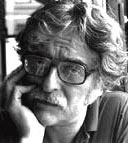 |
→ May 2007 Contents → Column
|
Nuts & Bolts:
The ABCs of Bags May 2007
|
 |
|
My basic shooting rig is two DSLRs. I have three gadget bags for those two camera bodies. You guessed it. Each bag has a different set of lenses.
Bag number 1, the "A" or All-purpose bag, has two relatively small, slow zoom lenses with a combined range of 24 to 200 mm, each with a maximum f/stop of f/4. Lenses that slow certainly couldn't be used as all-purpose news lenses a decade ago. But current digital cameras produce excellent results at high "film" speeds. And each of these f/4 lenses has "image stabilization," Canon's name for lenses that use tiny gyros to send a signal to servomotors which move a lens element to compensate for camera motion and allow you to successfully use slower shutter speeds.
Nikon's phrase covering similarly equipped lenses is "vibration reduction."
Gyros can be used to move lens elements, move prisms or (if big enough) to steady entire cameras. Shooting from a small plane with a movie camera equipped with multiple gyros, each larger than my still cameras, I have produced steady, vibration-free footage even though I have little experience with motion picture gear.
The old rule of thumb for handheld still cameras is that the slowest speed you can hand hold is the reciprocal of the focal length; i.e., you can hand hold a 50 mm lens at 1/50th of a second. The old rule of image stabilization is that you can shoot two or three shutter speeds lower with these lenses and still get a sharp shot. Like all old rules, they are somewhat inexact. Some photographers are successful at even lower speeds and some aren't. But almost all photographers with smaller, lighter gadget bags and backs that don't hurt are more successful in that they can pay a little more attention to the subject.
Still, however steady you can hand hold, it takes a high shutter speed to stop a ballerina or a ballplayer. (Or, for the shorter focal length fans, the proverbial basket of puppies...) After looking at a lot of blurred puppies, I started bag number two.
That's right. Bag number two has a number of very fast, fixed focal length lenses. It's heavy; it's a shoulder killer. All the lenses except the longest are f/1.4 or faster; the longest lens is a 135/2. It's the "B" Bag. The Big B Bag Breaks your Back, but you usually can set it down somewhere while you shoot. It really makes you appreciate the strong Backs and Big Bucks Behind the Ballerina and Baseball shooter's 600/4.
While the B bag's main job is to allow for reasonable shutter speeds in low light, it has reintroduced me to shallow depth of field - especially in portraits and relatively close-up pictures of people. It doesn't eliminate the background. But the shallow depth separates people from the background and keeps the attention on them.
Because the very high-speed lenses in the B bag test the limits of the autofocus, my cameras are equipped with the Ee-s ground glass screens that allow for easier and more accurate manual focusing. Be advised, however, that this screen produces a dimmer, darker viewfinder image than the standard one. It was created for lenses with a maximum aperture of f/2.8 or greater. You'll have to take off your sunglasses when you are using a slow zoom.
The third bag is the "C" bag or the Compact bag. I use it when I'm doing street photography. It is so small it is sometimes replaced by jacket pockets. It contains a 35/2, a 50/1.8 and an 85/1.8. These are all small lenses. They also have relatively small price tags. The 50/1.8 usually goes for about $90. Guess what; it's not as good as the 50/1.2 with a street price of at least $1,600. But when you put a tiny lens, instead of some humongous zoom, on any of the relatively sizable DSLRs, you become in the eyes of the world an ignorable, bumbling amateur. Suddenly the camera doesn't seem as big, as impressive, as important. People ignore you, leave you alone, probably pity you, let you take pictures.
That guy with the large, long zoom - I don't want to get Freudian about it, but he's going to attract all the attention while you get all the shots. Maybe he uses that lens because he is more interested in attracting attention than getting pictures.
I've used the small-lens rig on the streets and in the subways of New York without getting hit. For those of you who have not shot on the streets of the Apple, this is a pretty good recommendation. One old lady did yell at me on the subway, but since I was using a digital camera I was able to reassure her by saying that the camera did not have any film in it.
That's about it except that I'm thinking of changing the B Bag to a BackPack. It's not the alliteration; it's the weight.
© Bill Pierce
Contributing Writer
|
|
Back to May 2007 Contents
|
|